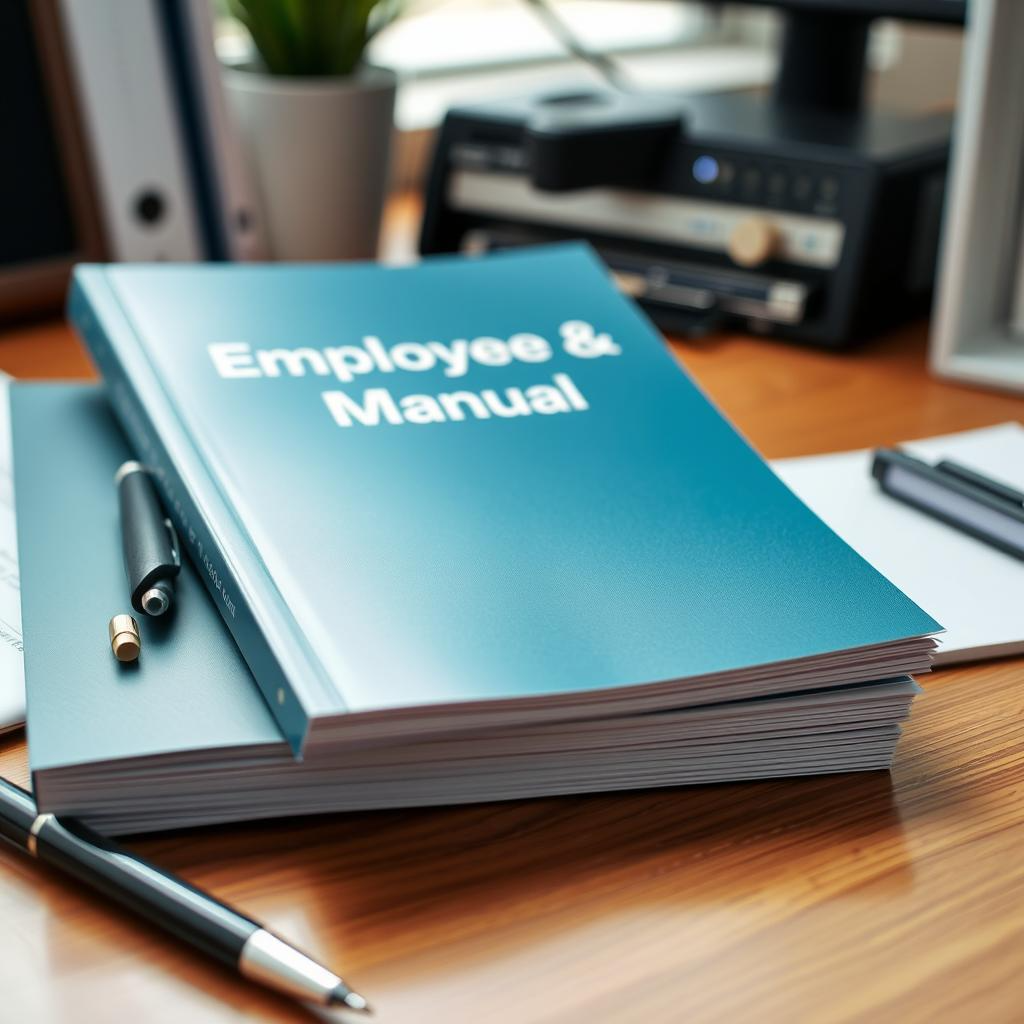Equal Employment Opportunity Cases

Welcome, new supervisors, managers, and business owners! As you step into leadership roles, understanding the legal landscape of employment is paramount. One area that demands consistent attention and proactive compliance is Equal Employment Opportunity (EEO). The laws governing fair employment practices are not static; they have been meticulously shaped and refined over decades, often as a direct result of landmark equal employment opportunity cases. This article aims to educate you on the historical context and the enduring significance of these cases, illustrating why the current Equal Employment Opportunity Commission (EEOC) laws are in place and why a robust EEO policy is indispensable for your organization.
At the heart of EEO laws is Title VII of the Civil Rights Act of 1964, a monumental piece of legislation that prohibits discrimination based on race, color, religion, sex, and national origin. This act established the Equal Employment Opportunity Commission (EEOC) to enforce these prohibitions. However, the initial text of Title VII was broad, and it was through the crucible of the American legal system that its interpretations were forged, leading to the sophisticated and comprehensive framework we navigate today. Court cases clarified ambiguities, addressed unforeseen scenarios, and expanded the scope of protections, making it clear what constitutes discrimination and what employers must do to prevent it.
Important Equal Employment Opportunity Cases

The trajectory of EEO law is perhaps best understood by examining some of the pivotal equal employment opportunity cases that have defined its principles:
Griggs v. Duke Power Co. (1971): The Birth of Disparate Impact This seminal Supreme Court case is a cornerstone of current EEO law. Prior to Griggs, workplaces could have employment practices that, while seemingly neutral, disproportionately excluded protected groups. Duke Power Company, for instance, required a high school diploma and satisfactory scores on two professionally developed aptitude tests for entry into certain departments, even though these requirements were not demonstrably related to job performance.
The Supreme Court ruled unanimously that if an employment practice, even one applied uniformly, has a "disparate impact" on a protected group and cannot be shown to be job-related and consistent with business necessity, it is unlawful under Title VII. This case introduced the concept that discrimination doesn't always have to be intentional; it can result from practices that, by effect, unfairly exclude certain groups. Griggs fundamentally shifted the burden of proof, requiring employers to validate job requirements if they lead to an adverse impact. It taught us that "good intentions" are not enough; employment practices must be fair in effect, not just in intent. Many subsequent equal employment opportunity cases built upon this foundation.
McDonnell Douglas Corp. v. Green (1973): Proving Disparate Treatment While Griggs addressed systemic, non-intentional discrimination, McDonnell Douglas provided a framework for proving "disparate treatment," where an individual claims they were intentionally discriminated against. Percy Green, a Black civil rights activist, was laid off by McDonnell Douglas. After protesting through an illegal "stall-in," he was denied re-employment when the company advertised for mechanics.
The Supreme Court established a four-step framework for proving disparate treatment in a Title VII case:
Prima Facie Case: The plaintiff must show they are a member of a protected class, applied and were qualified for a job for which the employer was seeking applicants, were rejected, and the position remained open or was filled by someone outside their protected class.
Employer's Burden: If the plaintiff establishes a prima facie case, the burden shifts to the employer to articulate a legitimate, non-discriminatory reason for the employment action.
Plaintiff's Rebuttal: The burden then shifts back to the plaintiff to prove that the employer's stated reason was merely a pretext for discrimination.
This framework is critical for individuals seeking to prove intentional discrimination and has been adopted in countless equal employment opportunity cases since, guiding courts and attorneys through complex factual disputes.
Price Waterhouse v. Hopkins (1989): Mixed-Motive Discrimination Ann Hopkins was a senior manager at Price Waterhouse who was denied partnership. While she had an outstanding record of securing business, some partners described her as "macho," "overly aggressive," and needing to "walk more femininely" and "talk more femininely" to improve her chances.
The Supreme Court ruled that if an employee proves that a protected characteristic (like sex) was a motivating factor for an adverse employment decision, even if other legitimate factors also played a role, the employer still bears the burden of proving it would have made the same decision absent the discriminatory motive. This "mixed-motive" theory significantly strengthened protections against subtle forms of bias. It highlighted that discrimination often isn't black and white, and multiple factors can influence decisions. This ruling directly led to amendments in the Civil Rights Act of 1991, codifying the mixed-motive causation standard and allowing for damages in such equal employment opportunity cases.
Ledbetter v. Goodyear Tire & Rubber Co. (2007) and the Lilly Ledbetter Fair Pay Act (2009): Expanding Pay Equity Lilly Ledbetter discovered late in her career that she had been paid significantly less than male colleagues for years. However, the Supreme Court ruled that her claim was time-barred because she had not filed a charge within 180 days of each discriminatory pay decision. This ruling effectively limited the ability of employees to challenge long-standing pay discrimination if they didn't know about it immediately.
Congress, recognizing the injustice, responded swiftly by passing the Lilly Ledbetter Fair Pay Act of 2009. This Act effectively overturned the Supreme Court's decision, stipulating that each discriminatory paycheck (or other compensation decision) restarts the 180-day (or 300-day) statute of limitations. This legislative action, in response to judicial interpretation, illustrates the dynamic nature of EEO law and the ongoing commitment to ensuring fair compensation. It's a powerful example of how equal employment opportunity cases can prompt legislative change.
These are just a few examples. Many other equal employment opportunity cases have shaped the interpretation of the Americans with Disabilities Act (ADA), the Age Discrimination in Employment Act (ADEA), and protections against retaliation, forming the intricate web of federal EEO laws you must understand.
Is Affirmative Action part of the Equal Employment
Opportunity Commission?

This is a common point of confusion. The EEOC's primary mission is to enforce anti-discrimination laws – ensuring that employment decisions are made without regard to protected characteristics. Affirmative Action (AA), on the other hand, refers to proactive steps taken by employers to recruit, hire, and promote qualified individuals from groups that have been historically excluded or underrepresented.
While both aim for a more equitable workplace, they operate under different legal frameworks. The EEOC does not generally administer affirmative action programs for private employers. Instead, affirmative action requirements are primarily mandated for federal contractors and subcontractors through Executive Order 11246, enforced by the Office of Federal Contract Compliance Programs (OFCCP). Some voluntary affirmative action plans may also exist for private employers, but they must be carefully constructed to avoid reverse discrimination.
So, while achieving equal employment opportunity might be an ultimate goal shared by both concepts, the EEOC's direct enforcement role focuses squarely on preventing and remedying discrimination, rather than mandating specific affirmative action quotas or programs. You're primarily concerned with ensuring your policies and practices avoid discrimination, as illuminated by the many equal employment opportunity cases.
How Important is it to Have an Equal Employment
Opportunity Policy?

Incredibly important. Having a clear, comprehensive Equal Employment Opportunity policy in your company's policy and procedures manual is not just a legal formality; it's a strategic imperative that benefits your organization in multiple ways:
Legal Compliance and Risk Mitigation: It demonstrates your company's commitment to obeying federal, state, and local EEO laws. In the event of a discrimination claim, a well-communicated EEO policy, coupled with consistent training and enforcement, can serve as a powerful defense, showing that your company made good-faith efforts to prevent discrimination. Lessons learned from past equal employment opportunity cases underscore this point.
Fostering an Inclusive Culture: A strong EEO policy signals to all employees that they are valued, respected, and judged on their abilities and performance, not on protected characteristics. This contributes to a positive, inclusive work environment, boosting morale, productivity, and employee retention.
Clear Expectations and Guidelines: Your EEO policy defines acceptable and unacceptable behavior in the workplace. It provides clear guidance for supervisors on how to make fair employment decisions regarding hiring, promotions, compensation, and disciplinary actions. It also outlines the procedures for employees to report concerns or alleged violations without fear of retaliation.
Attracting Diverse Talent: Companies with strong EEO policies and reputations for fairness are more attractive to a wider pool of talent. In today’s competitive market, diversity is not just a moral imperative but a business advantage.
Ignoring the lessons from equal employment opportunity cases and failing to implement a robust policy leaves your company vulnerable to costly lawsuits, damage to reputation, and a toxic work environment.
Should I Produce a Company Policy and Procedures Manual?

Absolutely, yes. A comprehensive company policy and procedures manual is a fundamental tool for any well-run business. It's the centralized repository for all your company's operational guidelines, expectations, and rules, including your crucial Equal Employment Opportunity policy.
Here’s why it’s essential:
Consistency and Fairness: A manual ensures that policies are applied consistently across all departments and to all employees. This consistency is vital in preventing accusations of arbitrary decision-making or favoritism, issues frequently raised in equal employment opportunity cases.
Legal Protection: It serves as documented proof that your company has communicated its policies, including those related to EEO, harassment, and workplace conduct. This documentation is invaluable if you ever face legal challenges.
Employee Guidance and Training: It's an indispensable resource for onboarding new employees, providing them with a clear understanding of your company culture, expectations, and how to operate within the organization. For existing employees, it's a go-to reference for questions about benefits, leave, conduct, and grievance procedures.
Empowerment of Management: Supervisors and managers can refer to the manual to ensure they are making decisions in line with company policy and legal requirements, reducing the risk of personal liability and company exposure.
Workplace Efficiency: Clear procedures streamline operations, reduce confusion, and save time that might otherwise be spent clarifying rules or resolving disputes.
Your Equal Employment Opportunity policy is a cornerstone of this manual. It provides the framework for non-discrimination and outlines processes for reporting and investigating complaints, directly addressing issues that have arisen in countless equal employment opportunity cases. Without a manual, your policies exist only in theory, making them difficult to enforce and defend.
Conclusion
In conclusion, the journey of EEO law from the Civil Rights Act of 1964 to its current form has been profoundly shaped by pivotal equal employment opportunity cases. These legal battles have clarified the nuances of discrimination, introduced critical concepts like disparate impact and mixed motive, and even prompted legislative responses to ensure fairness. As new supervisors, managers, and business owners, it is your responsibility to understand this history and translate its lessons into proactive, preventative measures within your own organizations.
By implementing a clear, comprehensive Equal Employment Opportunity policy within a well-structured company manual, you are not only ensuring legal compliance but also actively cultivating a fair, respectful, and inclusive workplace. This approach protects your company from legal risks, enhances your reputation, and ultimately builds a stronger, more productive team. Embrace the informed leadership that these historical equal employment opportunity cases demand, and you will lay a solid foundation for both ethical business practices and sustained success.